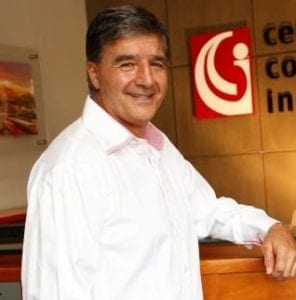The Cement & Concrete Institute (C&CI) is driving a campaign – and leading a special task group – to promote the concept of prefabricated construction which has to date been under-utilised in South Africa.
Gary Theodosiou, structural engineer at the C&CI, says construction with prefabricated structural elements offers several advantages. “These include speed of construction by reducing propping time for in-situ cast concrete; improved quality because of pre-fabrication’s controlled production conditions; and enforced coordination and teamwork because constructability, layout and connection details all have to be planned well in advance. Nevertheless, prefabricated concrete – mainly through a lack of awareness – is not yet used frequently in this country,” he states. Theodosiou believes an important reason is that precast concrete contractors are not marketing their products and expertise sufficiently to structural engineers who consequently miss out on the design opportunities offered by precast concrete elements, particularly columns, beams, and stairs. “Those who perceive structural steel construction to be faster compared to conventional in-situ reinforced concrete construction may be unaware of the favourable production lead times precast concrete can offer. Concrete structures offer a huge amount of flexibility in the ways and methods in which they can be constructed.“Concrete has an advantage over other materials in that the concrete elements – such as walls, columns, beams, trusses and slabs – can be constructed in-situ on site, or precast on site on the ground and lifted into their final position on site, as in the case of tilt up and stack casting; or precast in a yard and transported to site and erected into position.
“Concrete furthermore has the additional benefit in that all of the above options can be combined on one project: some elements can be constructed in-situ with others precast on site or precast off site. In addition, individual concrete elements can be designed and built combining in-situ and precast concrete, known as ‘hybrid concrete’,” Theodosiou explains. The C&CI’s Precast Concrete Task Group, which has Murray & Roberts Building among its members, has in collaboration with UCT, arranged special technical workshops, Design Principles for Precast Concrete Structures, to be held in Cape Town (February 4), Durban (February 6), and Johannesburg (February 7). The workshop will be presented by global precast authority, Prof Joost Walraven, former Professor of Concrete Structures at TU Delft in the Netherlands prior to his retirement in 2012. The participant target groups for the workshop include:- Structural engineers involved in the design of reinforced concrete structures;
- Practitioners and site staff involved in the construction of such elements;
- Agency and public sector engineers responsible for reinforced concrete projects; and
- Students and academics.








